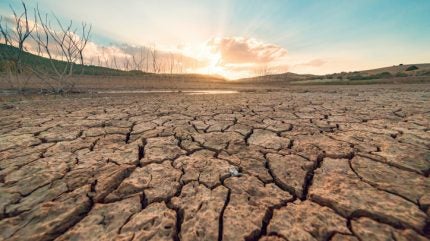
Up to $1.14trn of corporate value in the world’s top stock markets is located in places that will suffer the worst socio-economic impacts related to climate change, according to a new report by risk advisory company Verisk Maplecroft.
India, whose importance in the global economy continues to grow, is among the countries with the highest vulnerability to climate change effects.

Discover B2B Marketing That Performs
Combine business intelligence and editorial excellence to reach engaged professionals across 36 leading media platforms.
Verisk Maplecroft’s climate hazard and vulnerability index (CHVI) measures second-order risks from climate change, not just direct effects, to include scenarios such as political instability, poverty, food insecurity and migration.
It finds that, in an intermediate scenario where global temperatures rise by 2.7°C, the number of countries with the highest risk of experiencing these secondary effects would double from 24 to 48. Given current asset locations and market valuations, this increases the financial exposure of companies in the world’s top stock markets – S&P 500, DAX, CAC 40, Nikkei 225 and FTSE 100 – from $34.8bn to $1.14trn.
The index measures 198 countries based on three key factors: their exposure to eight different climate risks; the population’s vulnerability in health, poverty, agricultural dependence and infrastructure; and their capacity to adapt to climate change through the resilience of their economic and political institutions.
The report found many emerging markets where multinational companies hold global assets are exposed to these risks, mainly India, Nigeria, Kenya, Bangladesh and Pakistan.

US Tariffs are shifting - will you react or anticipate?
Don’t let policy changes catch you off guard. Stay proactive with real-time data and expert analysis.
By GlobalDataThe climate outlook for India is particularly worrying for corporate interests, given its role as a budding economic superpower. Last year, Taiwanese company Powerchip Semiconductor Manufacturing Corporation announced it would build the country’s first semiconductor plant. Vietnamese auto operator Vinfast also announced a $2bn pledge to build electric vehicles in India.
The International Monetary Fund (IMF) expects India’s economy to expand by 6.5% in 2025 and become one of the world’s largest economies, behind only China and the US, in the coming decades. The report found that, across all the stock markets it analysed, India has more than 95% of the assets in countries categorised as ‘very high’ risk by the index by 2050. It is home to more than $1trn in market capitalisation across the measured markets.
The S&P 500 is the most financially exposed to second-order climate change implications in India, with assets worth $818bn.
“Markets tend to price risk at the corporate level, yet climate vulnerabilities manifest where assets are located, not just where companies are domiciled,” Verisk Maplecroft principal markets analyst Franca Wolf says. “Rising exposure to the direct and indirect risks of climate change could threaten the long-term viability of investments.”
The most vulnerable countries at an intermediate emissions scenario are in Sub-Saharan Africa. The ten most vulnerable countries are Chad, Central African Republic, Niger, Somalia, Nigeria, Sudan, South Sudan, Burkina Faso, Togo and Sierra Leone.





